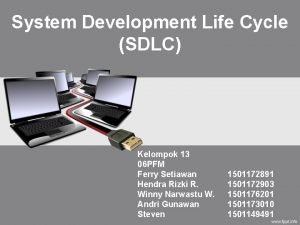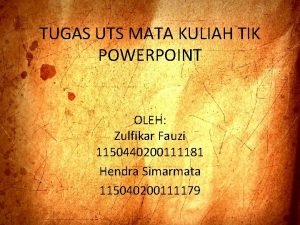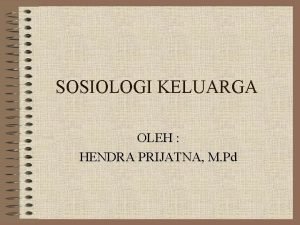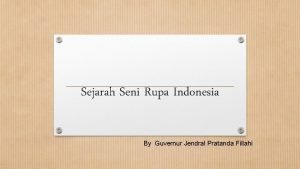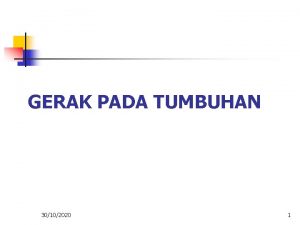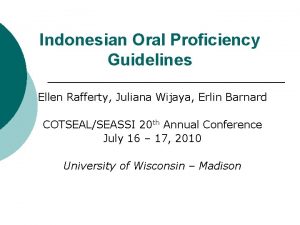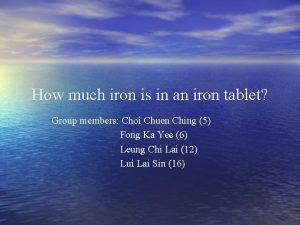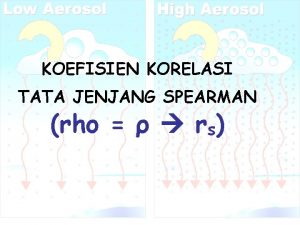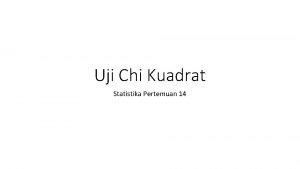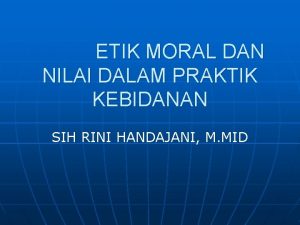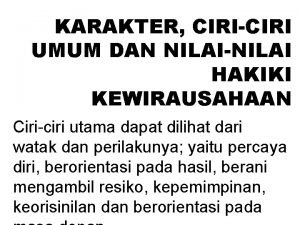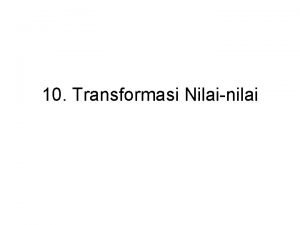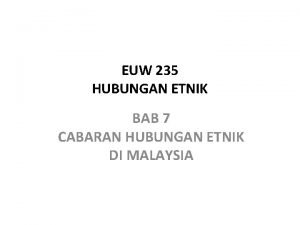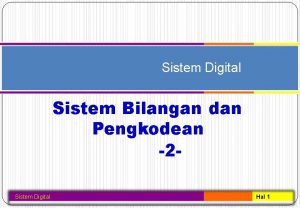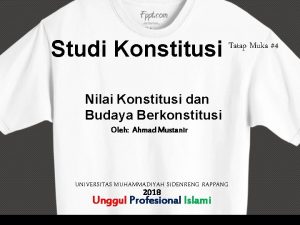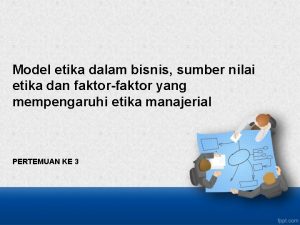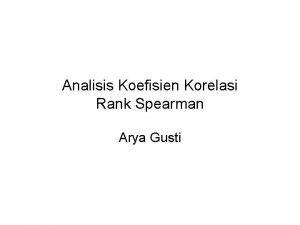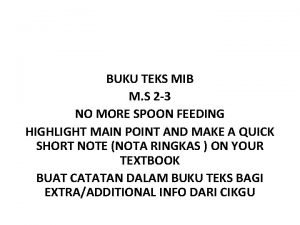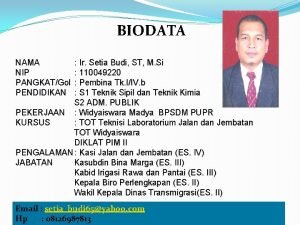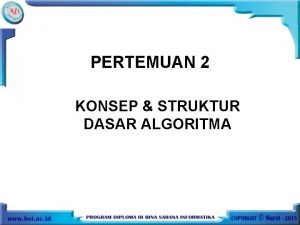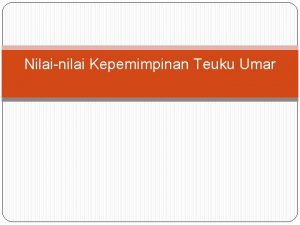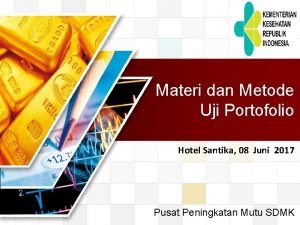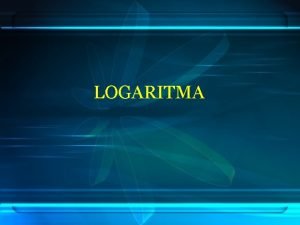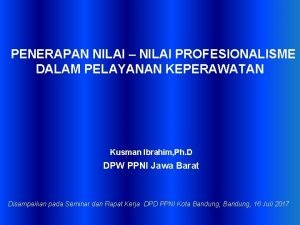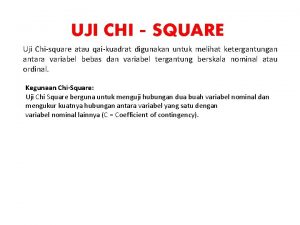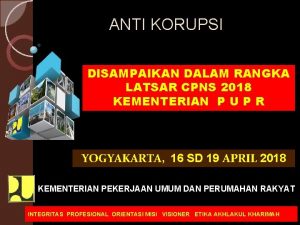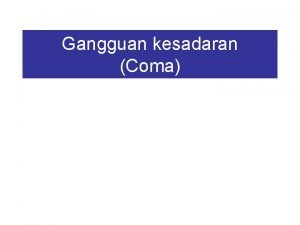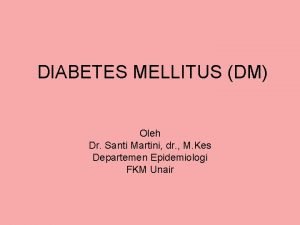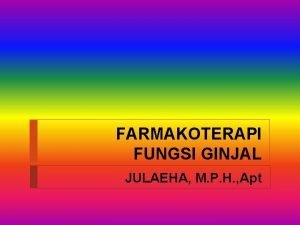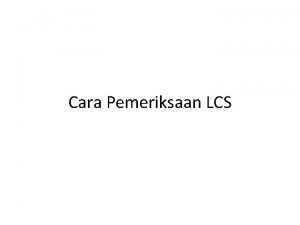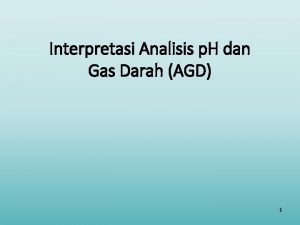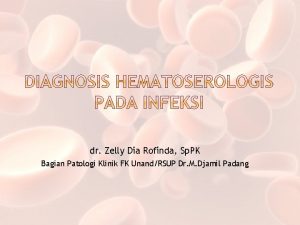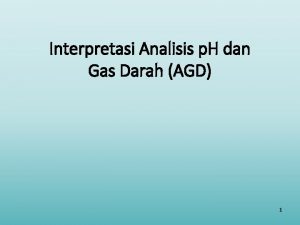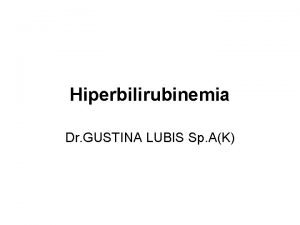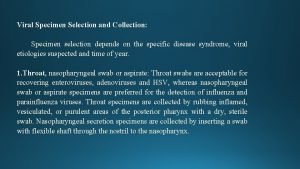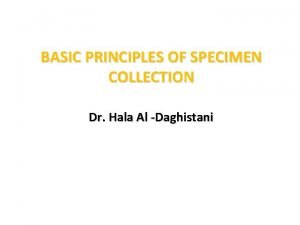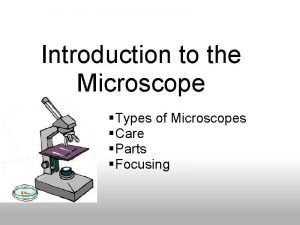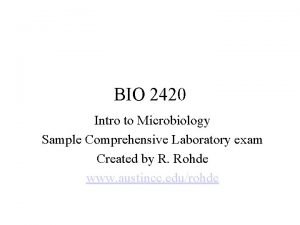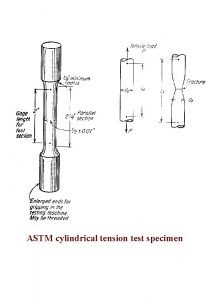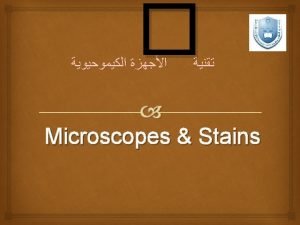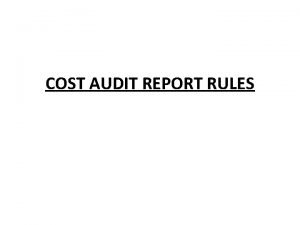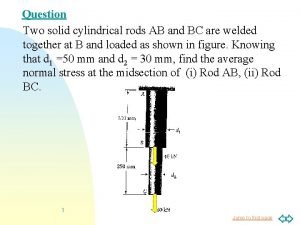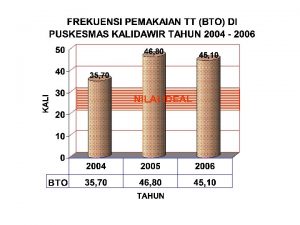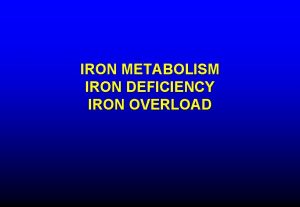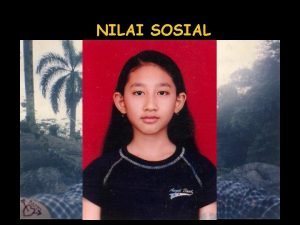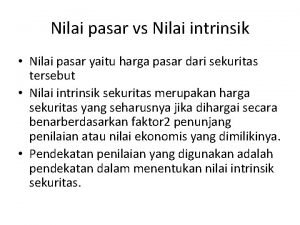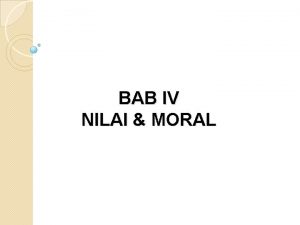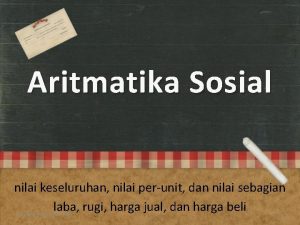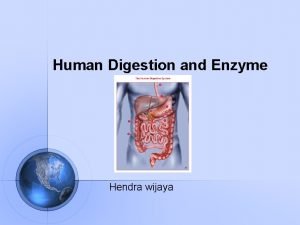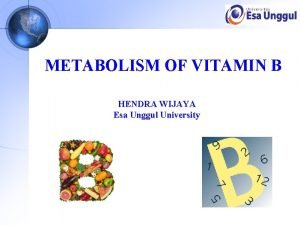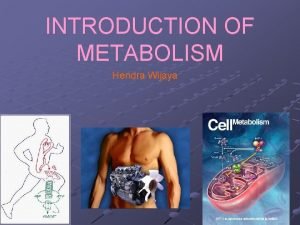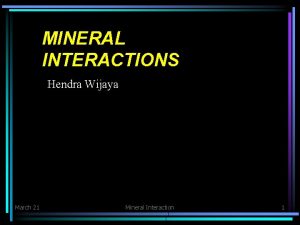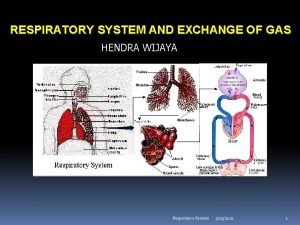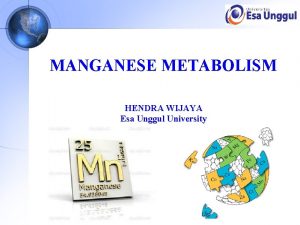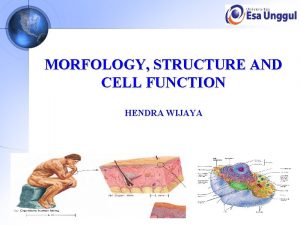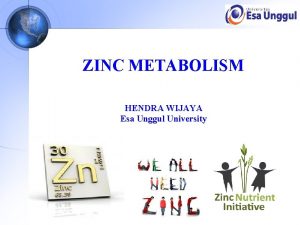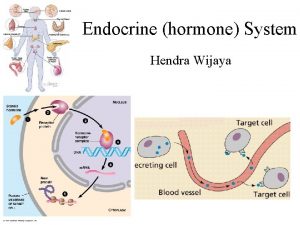NILAI NORMAL SPECIMEN HENDRA WIJAYA Iron plays a







































































- Slides: 71

NILAI NORMAL SPECIMEN HENDRA WIJAYA



Iron plays a principal role in erythropoiesis, because it is necessary for proliferation and maturation of RBCs and for hemoglobin synthesis. Of the body’s normal 4 g of iron (somewhat less in women), about 65 percent resides in hemoglobin and about 3 percent in myoglobin. A tiny but vital amount of iron is found in cellular enzymes, which catalyze the oxidation and reduction of iron. The remainder is stored in the liver, bone marrow, and spleen as ferritin or hemosiderin. 1




A CBC includes 1. enumeration of the cellular elements of the blood, 2. evaluation of RBC indices, and 3. determination of cell morphology by means of stained smears. Counting is performed by automated electronic devices capable of rapid analysis of blood amples with a measurement error of less than 2 percent. 20




The mature RBC (erythrocyte) is a biconcave disk with an average life span of 120 days. Because it lacks a nucleus and mitochondria, it is unable to synthesize protein, and its limited metabolism is barely enough to sustain it.

ERYTHROCYTE (RBC) COUNT The erythrocyte (RBC) count, a component of the CBC, is the etermination of the number of RBCs per cubic millimeter. In international units, this is expressed as the number of RBCs per liter of blood. The test is less significant by itself than it is in computing Hgb, Hct, and RBC indices.

HEMATOCRIT Blood consists of a fluid portion (plasma) and a solid portion that includes RBCs, WBCs, and platelets. More than 99 percent of the total blood cell mass is composed of RBCs. The Hct or packed RBC volume measures the proportion of RBCs in a volume of whole blood and is expressed as a percentage.

HEMATOCRIT

HEMOGLOBIN

RBC indices are calculated mean values that reflect the size, weight, and Hgb content of individual erythrocytes. They consist of the mean corpuscular volume (MCV), the mean corpuscular hemoglobin (MCH), and the mean corpuscular hemoglobin. concentration (MCHC). MCV indicates the volume of the Hgb in each RBC, MCH is the weight of the Hgb in each RBC, and MCHC is the proportion of Hgb contained in each RBC. MCHC is a valuable indicator of Hgb deficiency and of the oxygen-carrying capacity of the individual erythrocyte. A cell of abnormal size, abnormal shape, or both may contain an inadequate proportion of Hgb






ERYTHROCYTE SEDIMENTATION RATE

ERYTHROCYTE SEDIMENTATION RATE


WHITE BLOOD CELL COUNT

WHITE BLOOD CELL COUNT

WHITE BLOOD CELL COUNT

WHITE BLOOD CELL COUNT

WHITE BLOOD CELL COUNT




CARBOHYDRATE

Blood Glucose (Serum Glucose, Plasma Glucose)

Blood Glucose (Serum Glucose, Plasma Glucose)

Two-Hour Postprandial Blood Glucose (Postprandial Blood Sugar)

ORAL GLUCOSE TOLERANCE TEST


PROTEIN




PROTEIN METABOLITE

KREATININ Creatinine is the end product of creatine metabolism. Creatine, although synthesized largely in the liver, resides almost exclusively in skeletal muscle, where it reversibly combines with phosphate to form the energy storage compound phosphocreatine. This reaction (creatine phosphate ←→ phosphocreatine) repeats as energy is released and regenerated, but in the process small amounts of creatine are irreversibly converted to creatinine, which serves no useful function and circulates only for transportation to the kidneys. The amount of creatinine generated in an individual is proportional to the mass of skeletal muscle present; level of muscular activity is not a critical eterminant.

KREATININ



LIPID




TRYGLICERIDE


CHOLESTEROL






ELECTROLYTES

SERUM SODIUM




SERUM CALCIUM

VITAMIN A




 The miracle plays
The miracle plays Pengertian sdlc menurut turban adalah
Pengertian sdlc menurut turban adalah Hendra simarmata
Hendra simarmata Hendra prijatna
Hendra prijatna Masa perintisan
Masa perintisan Harga sepotong baju di pasar kota adalah
Harga sepotong baju di pasar kota adalah Buah polong di samping melakukan gerak
Buah polong di samping melakukan gerak Yuliagnis transver wijaya
Yuliagnis transver wijaya Cakra wijaya kusuma
Cakra wijaya kusuma Dr. juliana wijaya
Dr. juliana wijaya Vonny wijaya
Vonny wijaya Niko wijaya
Niko wijaya Lily wijaya
Lily wijaya Iron sharpens iron friendship
Iron sharpens iron friendship Mass of iron in an iron tablet
Mass of iron in an iron tablet Pengertian korelasi spearman
Pengertian korelasi spearman Kedekatan nilai nilai pengukuran individual
Kedekatan nilai nilai pengukuran individual Nilai agama laut bercerita
Nilai agama laut bercerita Pancasila merupakan ideologi yang mengedepankan nilai-nilai
Pancasila merupakan ideologi yang mengedepankan nilai-nilai Definisi dibuli
Definisi dibuli Contoh konsep, nilai moral, dan norma
Contoh konsep, nilai moral, dan norma Logo budaya korporat
Logo budaya korporat Statistik uji khi kuadrat
Statistik uji khi kuadrat Nilai konstitusional adalah
Nilai konstitusional adalah Bongkah
Bongkah Penerapan nilai nilai pancasila dalam praktik kebidanan
Penerapan nilai nilai pancasila dalam praktik kebidanan Nilai hakiki
Nilai hakiki Transformasi nilai-nilai dalam manajemen perubahan
Transformasi nilai-nilai dalam manajemen perubahan Contoh nilai moral universal
Contoh nilai moral universal Nilai nilai teras
Nilai nilai teras Nilai binar dari nilai bilangan decimal 196 . ?
Nilai binar dari nilai bilangan decimal 196 . ? Kesimpulan kuih tradisional
Kesimpulan kuih tradisional 3 macam nilai konstitusi menurut karl loewenstein
3 macam nilai konstitusi menurut karl loewenstein Sumber sumber etika bisnis
Sumber sumber etika bisnis Korelasi rank spearman
Korelasi rank spearman Buku teks brunei
Buku teks brunei Tal rho superman
Tal rho superman Nilai wujud yang melahirkan benda seni adalah nilai
Nilai wujud yang melahirkan benda seni adalah nilai Menurut catalano, etika sebenarnya dapat dipahami sebagai:
Menurut catalano, etika sebenarnya dapat dipahami sebagai: Struktur dasar algoritma
Struktur dasar algoritma Kepemimpinan teuku umar
Kepemimpinan teuku umar Contoh portofolio perawat mahir
Contoh portofolio perawat mahir Isi jsn 45
Isi jsn 45 Nilai dari log 50 + log 6 - log 30 adalah
Nilai dari log 50 + log 6 - log 30 adalah Nilai-nilai profesionalisme
Nilai-nilai profesionalisme Contoh lindung nilai atas nilai wajar
Contoh lindung nilai atas nilai wajar Empat faktor penentu kejayaan pelan integriti nasional
Empat faktor penentu kejayaan pelan integriti nasional Nilai pkbn2k
Nilai pkbn2k Tabel taraf signifikansi
Tabel taraf signifikansi Peran tunas integritas wow effect
Peran tunas integritas wow effect Gambar pendekatan nilai nilai bersaing
Gambar pendekatan nilai nilai bersaing Gcs+score
Gcs+score Nilai normal gula darah puasa dan 2 jam pp
Nilai normal gula darah puasa dan 2 jam pp Cara menghitung jumlah leukosit
Cara menghitung jumlah leukosit Interpretasi gfr
Interpretasi gfr Nonne pandy
Nonne pandy Intepretasi agd
Intepretasi agd Nilai normal limfosit
Nilai normal limfosit Nilai normal agd
Nilai normal agd Bilirubin normal pada bayi
Bilirubin normal pada bayi Nilai normal wbc
Nilai normal wbc Specimen selection
Specimen selection Example of running record observation of a child
Example of running record observation of a child Four principles of specimen collection
Four principles of specimen collection When focusing a specimen, you should always start with the
When focusing a specimen, you should always start with the What does emb test for
What does emb test for Viscera preservation
Viscera preservation Cylindrical tensile specimen
Cylindrical tensile specimen Bright field microscopy
Bright field microscopy Cost audit report
Cost audit report Types of microscopes
Types of microscopes Two cylindrical rods ab and bc are welded together at b
Two cylindrical rods ab and bc are welded together at b

